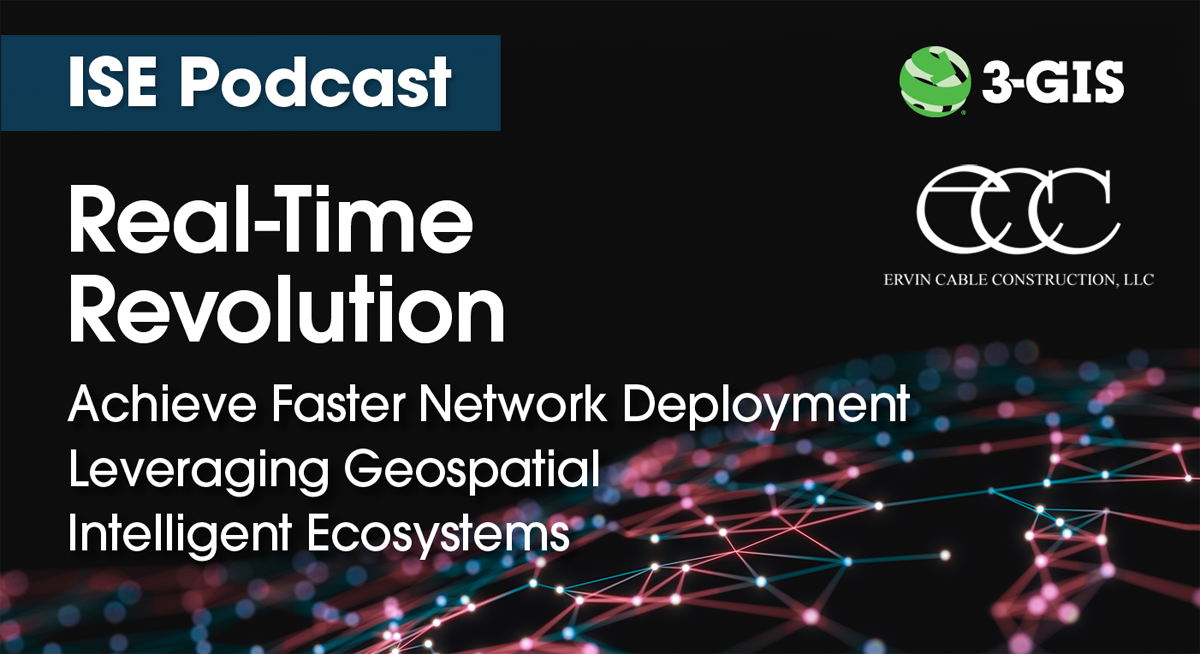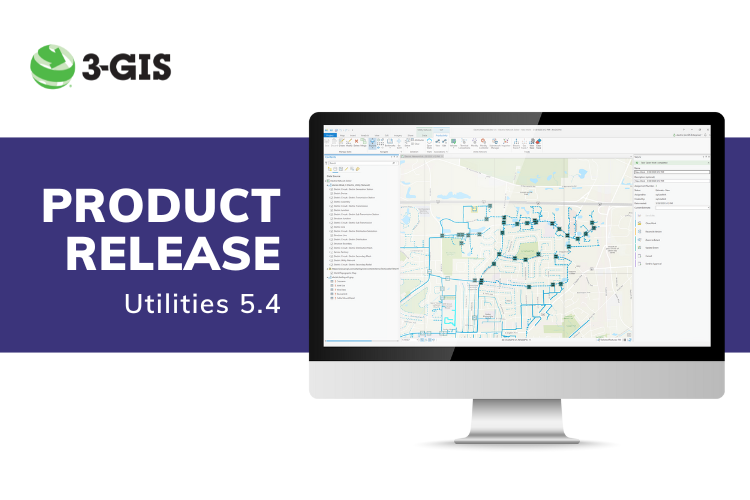The hard and soft costs of changing to real-time data management
The approach to real time data management systems has held dramatic implications for faster network deployment, service activation, reparation and better reporting. But what does it cost to make that change to a real time network management system? Like everything, there are hard and soft costs. We know that accurate and real time data can provide the best operational and strategic value, but it does come at the expense of letting go of familiar methods and integration into existing environments. On a recent ISE podcast episode, Michael Measels, VP of Product Management, 3-GIS, and Tim Sherman, Engineering Director, Ervin Cable Construction, LLC (ECC), analyze the impact and value of GIS in telecom.
When asked if a standard is being developed around broadband infrastructure, and whether it is synonymous with the GIS revolution in electric and gas utilities experienced 20 years ago, Measels explains that “people are just now starting to embrace [GIS] technology and what it might mean to their overarching organizational goals.”
Telecom’s delayed adoption of geospatial approaches
Sherman highlights that it is likely the “if it ain’t broke, don't fix it” mentality that has prevented enterprises in telecom from embracing geospatial approaches for building and managing assets sooner. He suspects that there is also a second reason: “Today’s marketplace…is becoming more competitive, both from what the customers are requesting and from other ISPs.” It is this fight within the marketplace that begs for a shift to a GIS system that accounts for not only new but also legacy networks. With the investments and movement in the broadband space that are already underway, this is where the adoption of GIS solutions will take off.
To further explain the slow adoption of GIS systems in telecom, Measels highlights that “one of the larger challenges we have in the industry and will continue to have is a significant amount of consolidation in the market.” Another challenge he adds is the need to overfill end of life copper and coax networks with fiber. Moving historical data to newer technologies can be expensive, and understanding the return on investment may be significantly challenging upfront.
Return on investment for leveraging GIS-based technology
“It always gets down to people, process and tools. So understanding the workflow against those three things I think is really critical”, Measels states. He describes a recent example of a successful implementation in terms of ROI: “We saw departmental increases in terms of scale around 80%. We had to test that hypothesis through the implementation, but we could see significant value over time as we iterated through the implementation. We saw a reduction in rework and planning exercises in the engineering department, about 10 or 30%. So that 10 to 30% really evolved into real dollars and cents as it related to what I would say the C-suite [executives] and organizations are evaluating. This kind of transformational idea in terms of leveraging this type of technology moving forward, and then ultimately just decreasing, swivel chair between systems and those kinds of things can obviously add up to real dollars as well.”
What are some tangible approaches to consider?
Measels explains that an important tangible approach to implementing GIS is getting a good grasp of the workflow beforehand:
- Identify stakeholders and find a champion in each department
- Document acceptance criteria
- Create an execution and delivery plan for individual stakeholders
- Help validate and ensure deliverables are being met
The real-time element
Sherman states that in fiber deployment projects, when field and office teams have a 360-degree view and uninterrupted access to network data, for planning, design, building, and management processes, it’s an “empowering thing for everybody involved." With the challenge of real time data delivery solved, it now becomes a matter of how to get people where they need to be faster.
In summary, telcos are quickly realizing that GIS-based technology is the key to network downtime and swivel-chairing prevention. This technology is transforming business operations by allowing different stakeholders in a company to simultaneously access real-time, accurate, secure, and up-to-date network information.
Listen to the full podcast episode available here by ISE.



